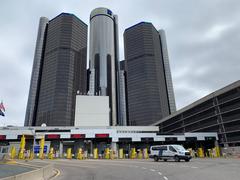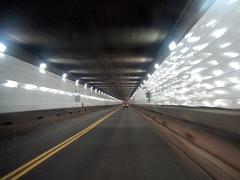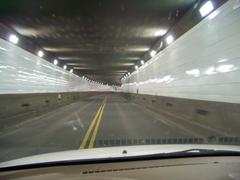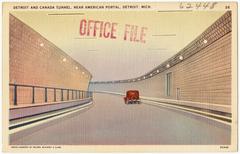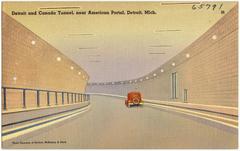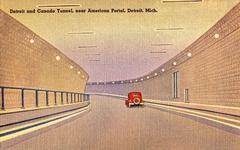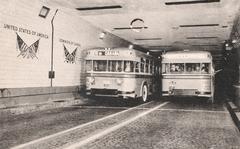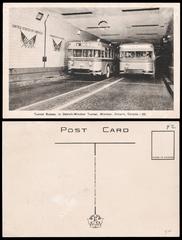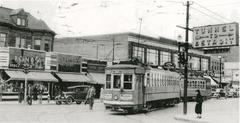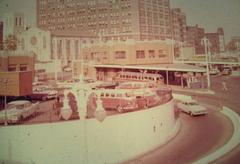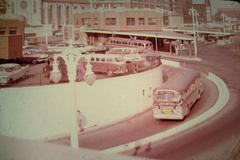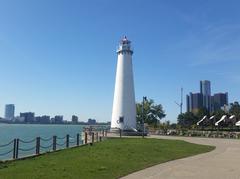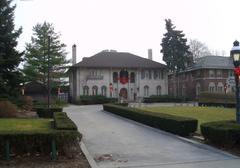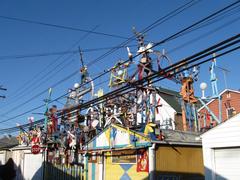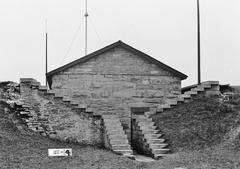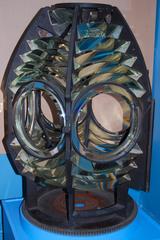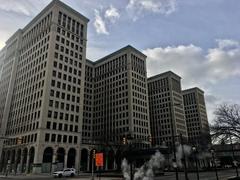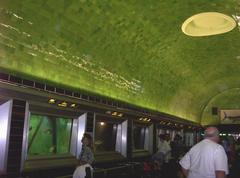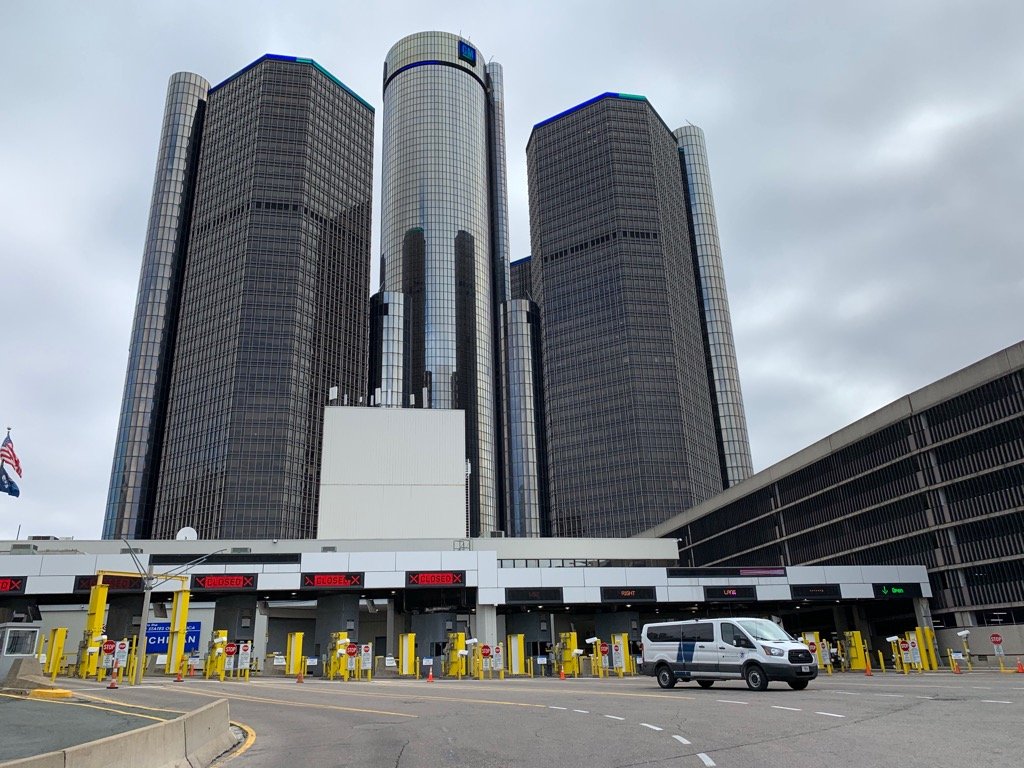
Detroit–Windsor Tunnel Visitor Guide: Hours, Tickets, and More
Date: 17/08/2024
Introduction
The Detroit–Windsor Tunnel is an iconic international highway tunnel that connects Detroit, Michigan, in the United States, with Windsor, Ontario, in Canada. Opened in 1930, this remarkable example of early 20th-century engineering symbolizes economic cooperation and international friendship between the two nations. Spanning 5,160 feet and reaching depths of 75 feet below the Detroit River, the tunnel is not just a conduit for vehicular traffic but a testament to human ingenuity and technological advancement (Wikipedia).
Throughout its history, the Detroit–Windsor Tunnel has played a crucial role in facilitating trade, travel, and cultural exchange. It was the third underwater vehicular tunnel constructed in the United States, following the Holland Tunnel and the Posey Tube, and was built at an approximate cost of $25 million, equivalent to around $363 million in today’s dollars (Medium). The tunnel’s construction utilized innovative techniques such as the immersed tube method, making it a pioneering project in subaqueous construction.
This guide aims to provide comprehensive information for visitors, including the tunnel’s rich history, visiting hours, ticketing details, and travel tips. Whether you are a history buff, a daily commuter, or a curious traveler, this guide will enhance your understanding and experience of the Detroit–Windsor Tunnel. Additionally, we will highlight nearby attractions in both Detroit and Windsor to make your visit even more enjoyable and memorable.
Table of Contents
- Introduction
- History of the Detroit–Windsor Tunnel
- Visitor Information
- Nearby Attractions
- Special Events and Tours
- FAQ
- Conclusion
History of the Detroit–Windsor Tunnel
Construction and Engineering Feats
Construction began in the summer of 1928, spearheaded by the engineering firm Parsons, Klapp, Brinckerhoff, and Douglas, the same firm responsible for the Holland Tunnel between Jersey City, New Jersey, and Manhattan, New York (Wikipedia). The executive engineer for the project was Burnside A. Value, with Norwegian-American engineer Søren Anton Thoresen as the engineer of design and Ole Singstad consulting and designing the ventilation system (Wikipedia).
Three different construction methods were employed to complete the tunnel. The approaches were built using the cut-and-cover method, while the hand-bored tunnels were constructed using a tunneling shield method. The most innovative technique used was the immersed tube method for the river section. This involved steam-powered dredgers digging a trench in the riverbed, into which nine 250-feet-long tubes, each measuring 35 feet in diameter, were placed and then covered with 4 to 20 feet of mud (Wikipedia).
Opening and Early Years
The tunnel officially opened to car traffic on November 3, 1930, at 12:05 am. The opening ceremony, held two days earlier, was a grand affair attended by dignitaries from both countries. Windsor Mayor Frederick Jackson boasted that the tunnel allowed people to “pass from one great country to the other in the short space of three minutes,” while Detroit Mayor Frank Murphy hailed the project as a symbol of “peace, friendship, and the brotherhood of man” (Medium). The first passenger car to traverse the tunnel was a 1929 Studebaker, marking the beginning of a new era in transnational connectivity.
Economic and Strategic Importance
The Detroit–Windsor Tunnel has played a crucial role in the economic and strategic landscape of the region. Initially, it facilitated the flow of automotive industry components, significantly contributing to the economic growth of both cities. During World War II, the tunnel served as a vital transportation link for military personnel and supplies, underscoring its strategic importance (DWTunnel).
A 2004 Border Transportation Partnership study highlighted the tunnel’s economic significance, revealing that 150,000 jobs in the region and $13 billion in annual production depended on the Windsor-Detroit international border crossing (Wikipedia). Despite a decline in traffic and profits between 2008 and 2012, the tunnel has seen a modest recovery in recent years, continuing to be a vital economic artery for the region (Wikipedia).
Technological Innovations
One of the most remarkable aspects of the Detroit–Windsor Tunnel is its ventilation system, designed by Ole Singstad. The tunnel has three main levels: the bottom level brings in fresh air under pressure, which is forced into the mid-level where the traffic lanes are located. The vehicle exhaust is then forced into the third level and vented at each end of the tunnel (Wikipedia). This innovative system ensures that the air quality within the tunnel remains safe for travelers, a significant achievement for its time.
Visitor Information
Visiting Hours and Tickets
The Detroit–Windsor Tunnel is open 24 hours a day, seven days a week. To facilitate a smooth crossing, the tunnel has gone cashless, accepting all major credit cards and Nexpress® toll passes (DWTunnel). It is recommended to check the tunnel’s official website for any updates on hours of operation or temporary closures.
Accessibility
The tunnel is accessible to both regular vehicles and commercial trucks. However, there are restrictions on hazardous materials, so it’s crucial to check the tunnel’s guidelines before planning your trip.
Travel Tips
- Peak Hours: Avoid peak travel times during morning and evening rush hours to minimize delays.
- Documentation: Ensure you have all necessary travel documents, including passports and any required visas, as you will be crossing an international border.
- Real-Time Updates: Use the tunnel’s live camera feature on their website to check current traffic conditions.
Nearby Attractions
Detroit Historical Sites
- The Henry Ford Museum: A must-visit for history enthusiasts, showcasing America’s innovation and history.
- Detroit Institute of Arts: Home to an impressive collection of artworks from around the world.
- Belle Isle Park: A beautiful island park offering stunning views of the Detroit skyline and a variety of outdoor activities.
Windsor Attractions
- Caesars Windsor: A popular casino and entertainment complex offering gaming, shows, and fine dining.
- Odette Sculpture Park: An open-air museum featuring over 30 large-scale sculptures along the Windsor riverfront.
- Windsor’s Little Italy: Experience authentic Italian cuisine and vibrant culture in this charming neighborhood.
Special Events and Tours
The Detroit–Windsor Tunnel occasionally hosts special events and guided tours. For instance, during the 2024 NFL Draft, the tunnel will remain open, ensuring smooth travel for attendees (Fox2Detroit). Check the tunnel’s official website for upcoming events and tour schedules.
FAQ
What are the Detroit–Windsor Tunnel visiting hours?
The tunnel is open 24/7, making it convenient for all travelers.
How much are the tickets for the Detroit–Windsor Tunnel?
The tunnel has gone cashless and accepts all major credit cards and Nexpress® toll passes. The fare varies depending on the vehicle type.
Are there any travel restrictions?
Yes, there are restrictions on hazardous materials. Always check the tunnel’s guidelines before planning your trip.
What are some nearby attractions?
In Detroit, visit the Henry Ford Museum, Detroit Institute of Arts, and Belle Isle Park. In Windsor, explore Caesars Windsor, Odette Sculpture Park, and Windsor’s Little Italy.
Conclusion
In conclusion, the Detroit–Windsor Tunnel stands as a monumental achievement in civil engineering and a symbol of international cooperation. Since its opening in 1930, the tunnel has played a pivotal role in the economic, social, and cultural landscapes of both Detroit and Windsor. It has facilitated significant cross-border trade and travel, contributing to the prosperity and development of the region (Wikipedia).
Visiting the Detroit–Windsor Tunnel offers a unique experience of traveling between two countries underwater, an engineering marvel worth appreciating. The tunnel’s continuous operation 24/7 ensures accessibility and convenience for all travelers. By following the provided travel tips and being aware of peak hours, documentation requirements, and toll payment methods, visitors can ensure a smooth and enjoyable journey.
Moreover, the tunnel’s proximity to various historical sites and attractions in both Detroit and Windsor adds to its appeal. Whether you’re interested in exploring the rich history at the Henry Ford Museum or enjoying the vibrant culture in Windsor’s Little Italy, there is something for everyone.
For the latest updates and travel tips, download the Audiala mobile app and follow us on social media. The Detroit–Windsor Tunnel is not just a passageway but a vital link fostering economic growth, cultural exchange, and lasting friendships between two great nations.
References
- Wikipedia contributors. (2023). Detroit–Windsor Tunnel. In Wikipedia, The Free Encyclopedia. Retrieved from Wikipedia
- Wurich, B. (2018). Burrowing Between Borders: The Detroit-Windsor Tunnel. Medium. Retrieved from Medium
- Detroit Windsor Tunnel. (2024). Official Website. Retrieved from DWTunnel
- Visit Detroit. (2023). Detroit–Windsor Tunnel. Retrieved from Visit Detroit
- Fox 2 Detroit. (2024). Detroit-Windsor Tunnel to Remain Open Leading Up to and During the 2024 NFL Draft. Retrieved from Fox2Detroit
